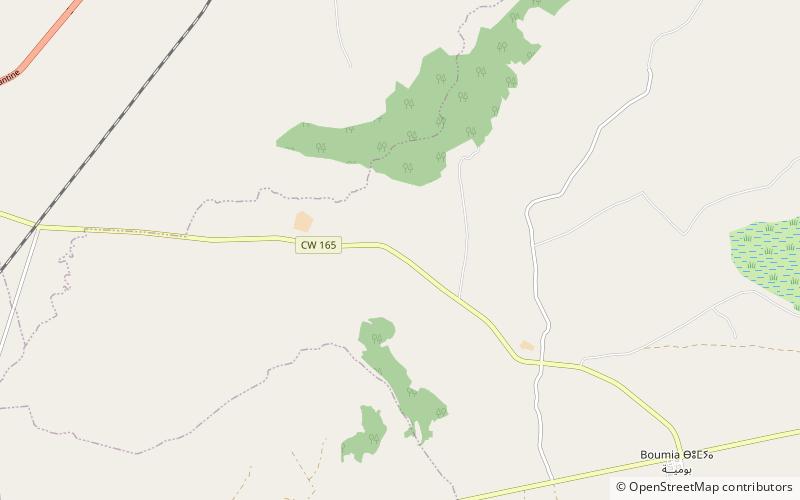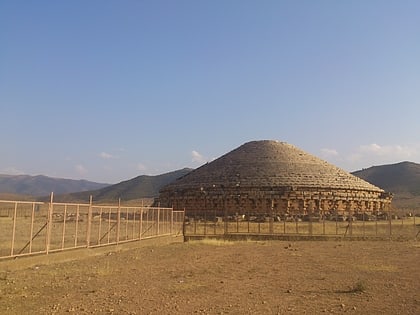Madghacen


Facts and practical information
Madghacen, an ancient Berber mausoleum located in Algeria, stands as a silent testament to North Africa's pre-Islamic history and the ingenuity of the region's early inhabitants. This grandiose tomb is considered one of the most significant monuments of the Numidian culture, dating back to the 3rd century BC.
The structure, also known as Medracen or Madrasen, is situated near the city of Batna, in the Aures Mountains. It is the oldest and largest mausoleum of the so-called "Royal Mausolea of Numidia," which includes the well-known Tomb of the Christian Woman (Kbor er Roumia).
Madghacen is a distinctive and impressive architectural feat, characterized by its circular, conical shape. The base of the monument is surrounded by a ring of 60 stone pillars, and its construction involves precisely cut stones, laid without the use of mortar, showcasing the advanced building techniques of its time.
The mausoleum is believed to be the final resting place of Berber King Juba I or one of his successors. It served not only as a tomb but also as a symbol of political power and cultural identity. The site was revered and protected for centuries, and even after the introduction of Islam to the region, it maintained its significance as a historical and cultural landmark.
Rue CW165Batna
